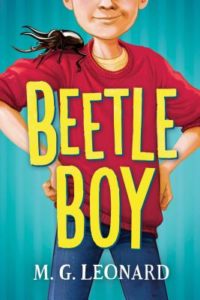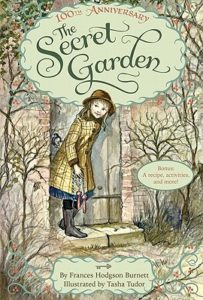craft review by Kate O’Shaughnessy
In my childhood bedroom, there was an air-conditioning vent in the far corner of the room. One day I noticed it was loose, so I pried it off. To my great delight, I discovered there was a little nook in there, a perfect hiding spot for small, treasured things. After Halloween, I hid as much candy as I could fit behind that loose vent. Sometimes I would sneak a mini Snickers or a Hershey’s kiss after I had brushed my teeth, which was a major no-no in my house. It felt so dangerous and exciting! But my enjoyment came less from the forbidden fruit of a late-night piece of candy, and more from the fact that I had a secret space all my own. A space no one knew about except for me.
In a world where adults are constantly telling children what to do, which vegetables to eat, when to go to bed, and sometimes, what to think and feel, the idea of a secret space can be magical and captivating. Maybe it’s a slender box tucked beneath a mattress, filled with crows’ feathers or shiny rocks. Or maybe it’s a treehouse with a retractable rope ladder, or a clubhouse hidden behind a thicket of bushes.
Whatever the case, having a secret space allows a child a certain sense of autonomy and independence they may lack in the real world. While this is important for real children, it’s also very important for fictional children main characters.
Stories move forward in a satisfactory way when the main character is an active catalyst, moving the plot forward with his or her own decisions. This can be hard when your main character is a kid. How can they get that space to think, plot, and plan independently, without an adult breathing down their neck?
When they have a secret space to retreat to.
Secret Spaces Enable Autonomy

Beetle Boy by M.G. Leonard (Chicken House, 2016)
In M.G. Leonard’s Beetle Boy, Darkus and his friends create a secret space called “Base Camp,” which they build from leftover pieces of the “Furniture Forest” in the neighbors’ junkyard behind Darkus’s uncle’s apartment.
“At the southern corner of the yard, as far away from the Emporium as possible, they constructed a room against the yard walls, using tall pieces of furniture and sheets of tarpaulin for the roof. They dragged in the grandfather clock, complete with resident mouse, and used the black door with the silver 73 to make the entrance.”
Throughout Beetle Boy, Darkus and his friends retreat to Base Camp to talk things through and make important decisions. Base Camp becomes so important to the children that the very last scene of the book takes place there—it’s a safe, secure spot for them to think and reflect on all that has happened to them.
Secret Spaces are FUN
But while secret spaces can be useful in a narrative, they can also be just plain fun.
“Look at all this amazing stuff I’ve found.” Virginia came through the door with an armful of goodies, which she unloaded onto the sofa. “A telescope for spying, an oil lamp, some string—always useful—a mirror, and a car battery.”
The best secret spaces are the ones the children make homey themselves, just like Virginia is doing by adding little odds and ends to Base Camp. Kids can scrounge for lamps, rugs, a cozy chair, or better yet, they can build things themselves to add to their secret spaces. In this type of creation there is a sense of joy and imaginativeness. A damp cave or a hole in the ground can be transformed into something magical, special, and all their own.
Secret Spaces Can Heal
 The creation of one’s own secret space can also be a way to heal. In Frances Hodgson Burnett’s The Secret Garden, we watch a forgotten, dilapidated garden come back to life thanks to the nurturing hands of two children. Through the rebuilding of the secret garden, the children rebuild themselves.
The creation of one’s own secret space can also be a way to heal. In Frances Hodgson Burnett’s The Secret Garden, we watch a forgotten, dilapidated garden come back to life thanks to the nurturing hands of two children. Through the rebuilding of the secret garden, the children rebuild themselves.
In Laurie Halse Anderson’s Speak, high school freshman Melinda Sordino struggles with the aftermath of a traumatic event that happened to her in the summer. While at school, she finds an unused janitor’s closet that becomes her hiding spot. She makes the closet her own with posters, art, and a turkey sculpture she made in art class, transforming it from something unused and forgotten into a safe space she can retreat to.
Invent a Secret Space for YOUR Character
Secret spaces can come in all shapes in sizes but no matter what, they are a valuable tool. After all, books themselves are a sort of secret space. They allow children to exist in a secret, adult-free environment: they can go on adventures, make mistakes, get into all sorts of trouble, and most of all, become more empathetic, without having a parent or guardian looking over their shoulder. This process is one of the very first stages of becoming their own person. Secret spaces in stories echo this higher truth and can add depth to your character and their journey.


I love this writing prompt! Great post about secret spaces!